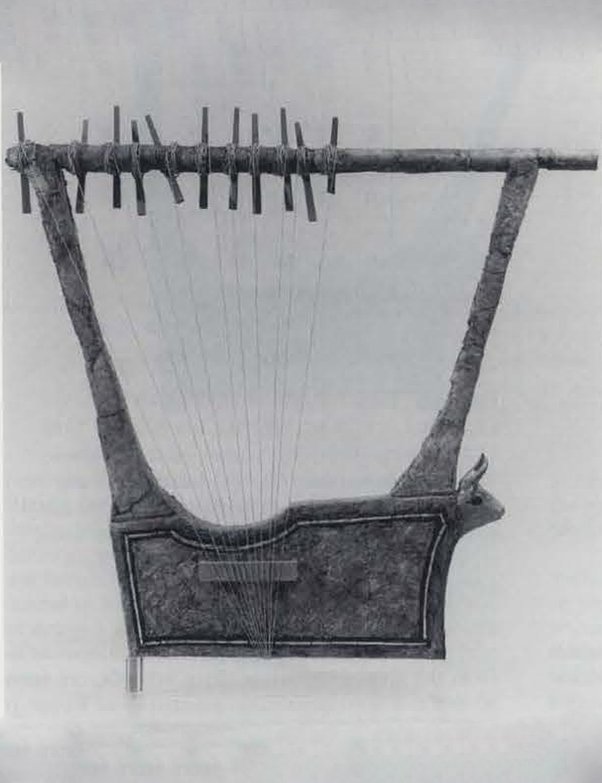SONIC STIRRINGS
From Acoustics to Electronics
/ 08.2023 / BY MELODY SANDERSON
From nocturnal animal footsteps and faraway screams, to the whir of a vacuum or the roar of a motor, sound has co-existed by our side since the start of humanity, supporting and guiding us in our survival and development as a species. Omnipresent, sound is in continuous dialogue with us, exchanging valuable information about the world around us. The thunder of the storm, the birdsong, the wind whirls, these are expression of nature’s whispers to us, and they take place all around us, in constant flux, inhaling and exhaling hidden truths to our ears. Sound waves travel to our eardrums, engaging with our brain's auditory cortex and stimulating our brainwaves. This interaction creates a multi-sensory experience that triggers our attention, and invites us to contribute to the conversation; an invitation we immediately accepted.
Sound, in its various forms such as music, tones, vibrations, and even silence, has the remarkable ability to positively impact our mental, emotional, and physical states. It has the power to convey emotions that words often fail to capture, making it a potent art form that can both health, inspire, uplift and unite. A universal language that expands beyond borders and culture, music is a powerful tool used to breakdown barriers, facilitate exchange and unite people. This art form knows no boundaries and can be understood by people from all walks of life, regardless of their native tongue. It transports us to various places and times through its intricate complicity with our mood, memory and emotions.
/ MUSIC OF MESOPOTAMIA
If we rewind to the birth of music, it started with primitive man utilising its most primal instrument: the voice. We evolved from using our voice solely to communicate to using it as a tool for entertainment, storytelling, and song. As time passed and societies evolved, so did our skill, creativity and inventiveness. Diverse musical instruments emerged across the globe, each made from the available materials and tools of its time, each with its own distinct build and sound. Some of the oldest known musical instruments are harp-like instruments depicted in ancient Egyptian and Mesopotamian art such as the ‘Bull's Lyre’ (dating back to around 2600 BCE), drums and rattles, and flutes built from mammoth ivory and bird bones (dating back to 40,000 years ago). These elementary instruments were then joined by string instruments such as the guitar and violin, percussions such as drums and xylophones, crafting a global symphony of musical creations and sounds. Stretching over millennia’s, this process grew until it was abruptly disturbed by technological advancements which questioned and revolutionised the music creation process.
/ ANCIENT GREEK DEPICTION OF WIND INSTRUMENT AULOS BEING PLAYED
With time, and as history goes, electronic music started winning over broader audiences, finding its voice among the rebels and trailblazers. Pioneers, by harnessing the evolving capabilities of technology, helped legitimise the genre. Technological advancements allowed more flexibility and control over sound creation, with synthesisers and digital audio workstations growing in accessibility and sophistication. With the endless opportunities stemming from this medium, electronic music went from being marginalised to playing an integral role in contemporary music. It reshaped our understanding of what constitutes ‘music’, expanded our sonic palette, and eventually made its way to popular culture.
These catalysts transformed electronic music with their artistic visions, technical expertise, and relentless creativity. Their contributions extended past gender under-representation in the music scene, significantly impacting the development of electronic music and reshaping the musical landscape. Today, this genre has evolved into vast horizons of technological tools. Synthesisers, drum machines, samplers, and computer softwares craft unique compositions, rich in machine-generated sound, pulsating beats, atmospheric textures and manipulations of acoustic sounds, such as the voice. Altering vocalisations through electronic manipulation allows them to reach more innovative landscapes, further blurring the line between organic and synthetic sounds. Human voice is an integral component in music creation, a component that has traveled across genres and epochs.
Rhythmic patterns in music show significant impacts on cognitive development, concentration, memory retention, and academic performance. Triggering the release of dopamine, a neurotransmitter associated with pleasure and reward, sound therapy shows promising results in stress and anxiety reduction, pain management support, sleep improvement, rehabilitation, and overall well-being. Techniques like binaural beats, sound healing, and sound baths facilitate emotional release while providing a sense of relaxation and calm. Sound therapy has played a vital role in traditional healing systems in ancient civilisations such as Ancient Egypt and Ancient Greece, and particularly in countries like India, China and Japan where for centuries sound was used as a therapeutic tool through practices such as chanting and sound healing, using singing bowls and gongs among other instruments. Finally, today, sound has become subject to abundant research and is gaining recognition for its apparent healing properties.
/ BULL'S LYRE, A HARP-LIKE INSTRUMENT DATING BACK TO AROUND 2600 BCE
The advent of machinery and electronics opened up new avenues for musical expression, with theremins and synthesisers enabling musicians to modulate sound in unprecedented ways. Viewed by traditionalists as a threat to longstanding, established classical musical practices and hierarchy, critics argued that the reliance on electronic components diminished its artistic value and refused to admit it any musical merit. The prevailing notion at the time was that music had to be created through traditional means, using physical instruments and conventional musical notations. The unconventional sounds produced by early electronic instruments challenged listeners' expectations and preconceived notions of what constituted "music” and its avant-garde nature clashed with the conservative norms of traditional music. Electronic music’s reliance on technology and emphasis on experimentation and innovation, led to its perception as artificial and lacking the emotional depth associated with acoustic instruments and human performance.
/ DAPHNE ORAM - 'THE WOMAN WHO COULD DRAW MUSIC'
Other women established themselves as pioneers in the electronic music scene. Wendy Carlos broke new ground with her iconic album "Switched-On Bach," introducing the world to the possibilities of synthesisers. Another, Laurie Anderson, blended spoken word, experimental sounds, and multimedia elements to create thought-provoking compositions, and Suzanne Ciani pioneered through her mastery of the Buchla synthesiser and her innovative use of electronic soundscapes, all of which left a lasting imprint on the genre.
/ DELIA DERBYSHIRE, CREATOR OF THE SOUND OF THE DOCTOR WHO THEME, AT WORK AT THE RADIOPHONIC WORKSHOP, LONDON.
Weaved across cultures, genres and mediums, music has transcended time and space. Instruments designed centuries ago continue to be played today and melodies taught in childhood still have a hold over our emotions and mood. A living entity in constant state of reflux, music’s ability to travel, transform, and evolve infuses it with qualities that defy our comprehension. It embraces new technologies, explores novel genres and fusions, and adapts to the changing cultural landscape. Its evolution from the primordial use of our voices to the craftsmanship of instruments and manipulation of machine-made sounds, is a testament to our innate need for self-expression and creation.
Artists are the pioneers of this evolution, pushing boundaries, and introducing innovative sounds and ideas. We witness them perform and enter a state of flow, disconnecting from internal and external noise and tuning into the present moment. This is where skill and intuition collide. Time dissolves, the mind quietens, barriers fade, and what takes place is profound artistic communion and symbiosis. Artists embody the spirit of exploration, perpetually seeking new paths to manifest the intangible and express the inexpressible. They become vessels through which music unfolds, capturing fragments of the divine and translating them into sound, proliferating out into the audience, stirring emotions, evoking memories, and bringing moments of joy to all those around.
/ LE LINK ORCHESTRION DE 1915 ET LE JUKEBOX À UN CENT D'EDISON DATANT DE 1887
Although sometimes overshadowed by their male counterparts, women played a crucial role in the development of this revolutionary genre. In the early days of electronic music, Daphne Oram, composer and co-founder of the BBC Radiophonic Workshop, defied societal norms by embracing emerging technologies to create groundbreaking compositions. Known as ‘the woman who could draw music’, she shook the industry with the Oramics technique she developed, an innovative method of sound synthesis. Oram worked alongside Delia Derbyshire, known for her work on the iconic Doctor Who theme for which she utilised tape manipulations in unprecedented ways. Together, they laid the foundation for future experimentations.







